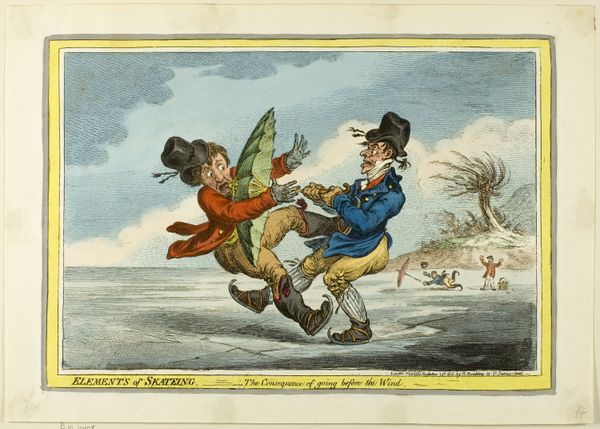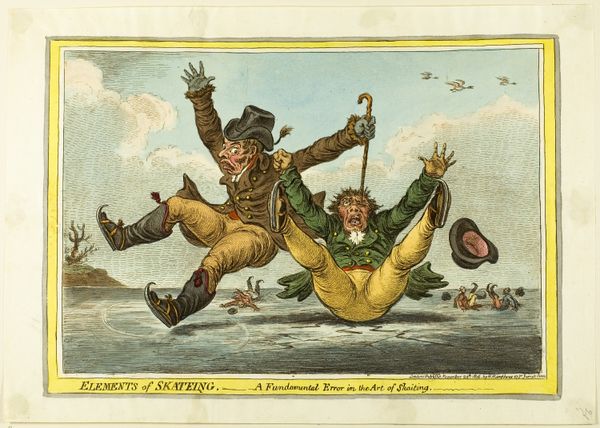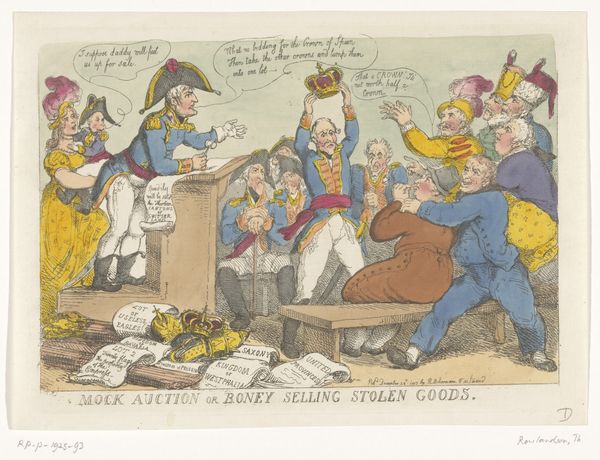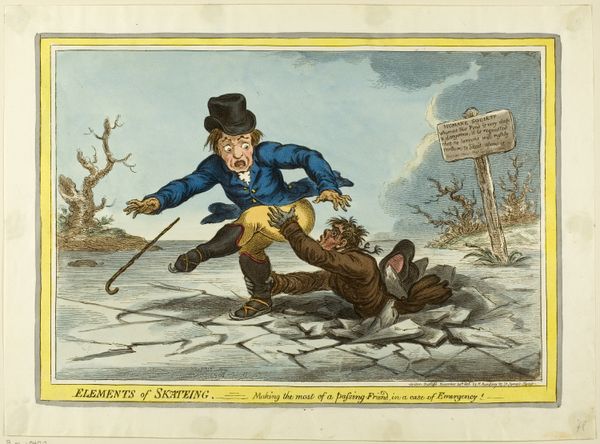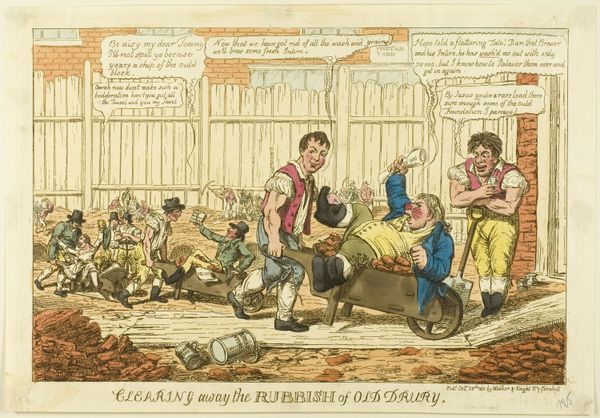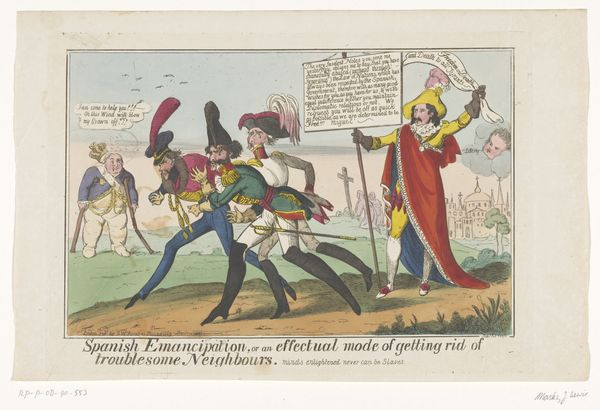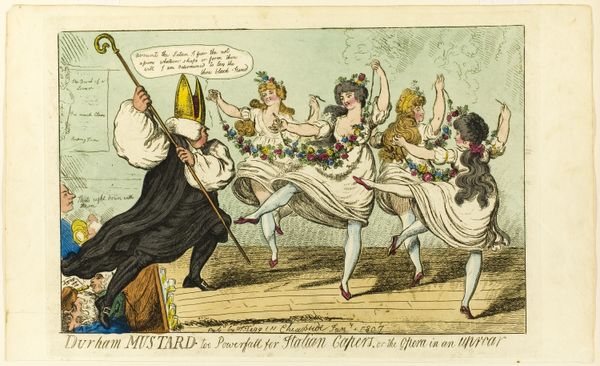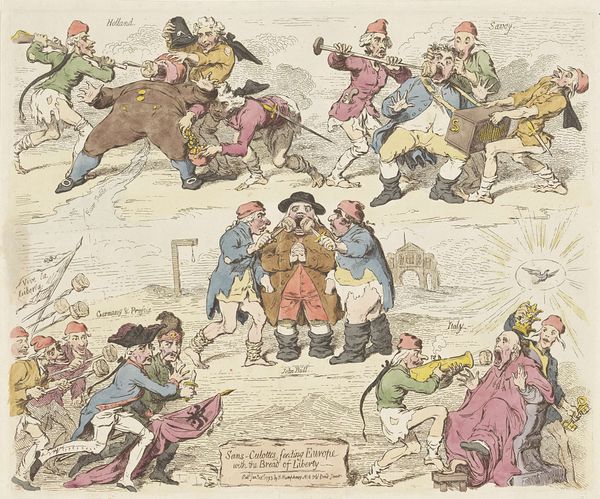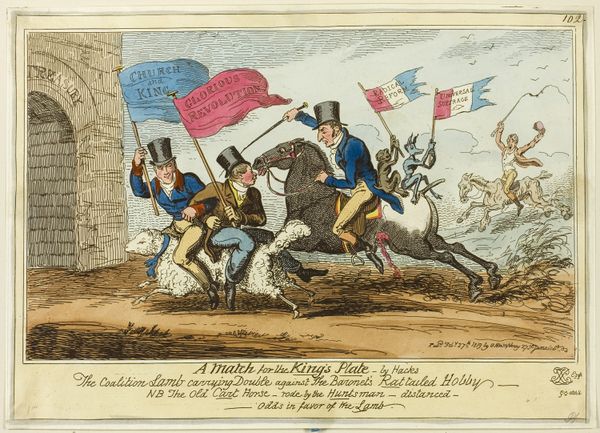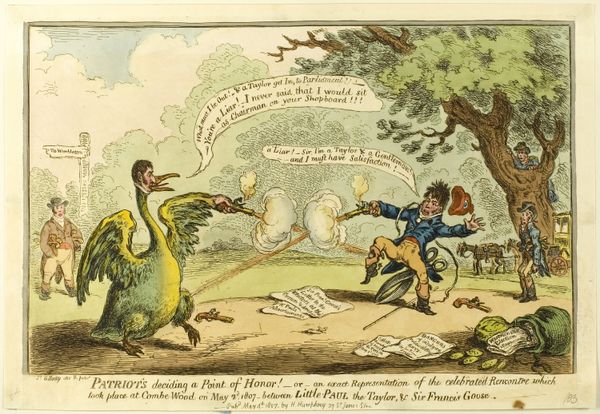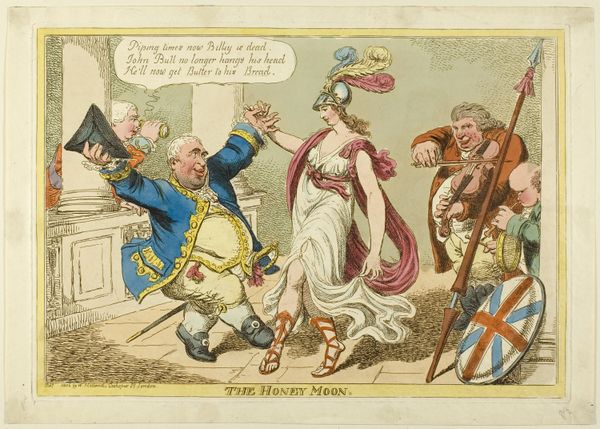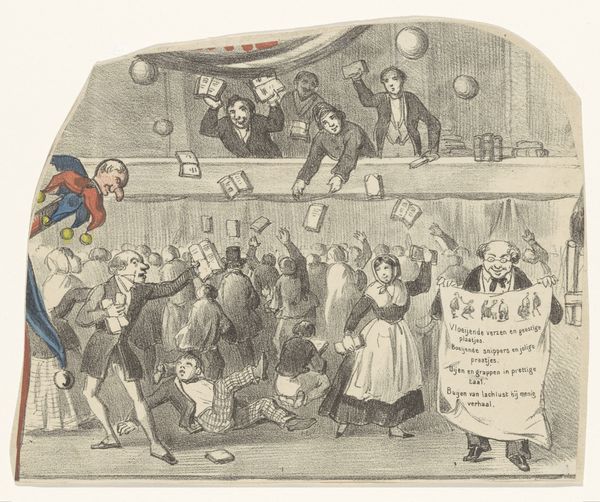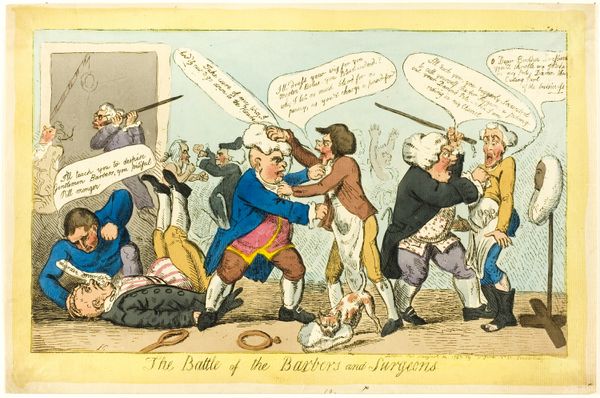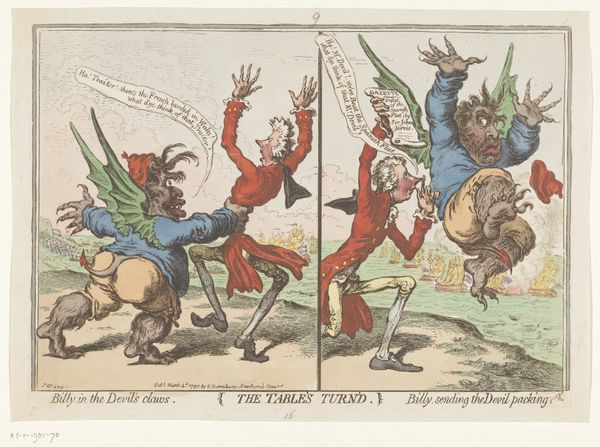
drawing, print, etching, paper
#
drawing
# print
#
etching
#
caricature
#
paper
#
romanticism
#
genre-painting
#
history-painting
Dimensions: 235 × 335 mm
Copyright: Public Domain
Curator: Charles Williams’ etching, dating to around 1818, is entitled "Skating- Dandies, Shewing Off". It is part of the collection here at The Art Institute of Chicago. Editor: Chaos! Absolute chaos on ice. It's funny how Williams renders their failed attempts at fashionable skating. All stiff limbs and flailing bodies! The sheer number of figures makes it quite engaging. Curator: I agree! It's not just humorous but functions as social critique. Williams mocks the superficiality of the dandies and comments on the shifting class dynamics during the Regency period. These men, so desperate to prove themselves, fall quite literally on their faces, so to speak. The act of performance reveals anxieties surrounding masculinity and status. Editor: I'm intrigued by the use of etching as the primary medium. It feels appropriate for capturing such satirical subject matter with precision and detail. Consider how the subtle cross-hatching defines form while lending texture to both their clothing and the ice. You almost feel the chill. Do you think paper was essential to democratizing the artform and broadening distribution beyond the aristocratic sphere? Curator: Absolutely, printmaking and etching are intertwined with social critique, providing wider distribution and potentially subversive commentary in accessible and affordable ways. Paper allows for wider consumption, disrupting elite control over cultural narratives. This challenges societal hierarchies, as the image could find its way into different social classes through mass production. Editor: It's striking how clothing functions as both the symbol of their aspiration and their undoing, isn't it? Constricting shapes lead to clumsy attempts, underscoring the disparity between idealized presentation and ungraceful reality. They're literally tripping over their own sartorial aspirations. Curator: The exaggerated silhouettes and absurd poses certainly amplify the satirical bite. It is in direct dialogue with broader questions surrounding identity, particularly anxieties related to class mobility. Through careful material and thematic consideration, we glean richer insights on gender roles. Editor: By examining materiality, and labor in this era of production, these romantic images become political. So then, our conversation is as valuable to understanding as Charles Williams was back in 1818, revealing, bit by bit, the nature of the beast, even two centuries later. Curator: Indeed. Thank you for illuminating those production and social elements; it adds depth to appreciating how prints such as "Skating-Dandies" shape narratives.
Comments
No comments
Be the first to comment and join the conversation on the ultimate creative platform.
